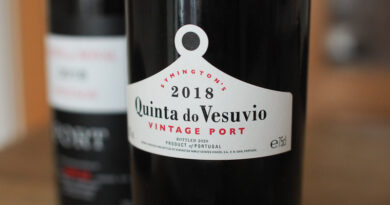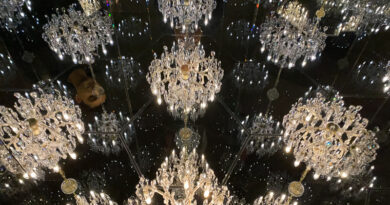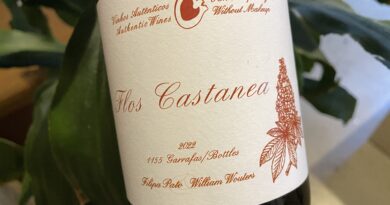William Downie, one of Australia’s most thoughtful winegrowers, based in Gippsland, Victoria
Website: https://www.williamdownie.com.au/
William Downie is one of the most thoughtful and interesting winegrowers in Australia. I visited back in December 2015, and then caught up with him again in Adelaide at the wine industry technical conference in 2017. So it was nice to taste with him again on his first visit to the UK in 8 years, showing his Pinot Noir 2023 releases.

He’s been making his own wines for 20 years now, and his story is an interesting one. He met his wife Rachel in Burgundy 22 years ago when she was working for Kermit Lynch and he was working in the vineyards in Gevrey. They got on well and soon hatched a plan to make a living as smallholders, growing grapes, other crops, and keeping animals. They initially thought of doing the project France, where they met. But the plan changed, and in 2006 they bought 40 acres in West Gippsland, which is just east of the Yarra Valley and down a bit. Even though they are just 1 h 20 from the Melbourne CBD, many people in the city don’t know there’s a wine region here.

Bill grew up in the Gippsland. He is a musician, and as a young adult was often playing in bands in the city. On the journeys in and out he drove past a hill, and as he became interested in wine he thought that this could be a great place to grow grapevines. He kept passing this hill for about a decade, and the more he learned about growing grapes, soil and climate, he became convinced this was the place to plant a vineyard.
So when they were in Australia Bill took Rachel to see this hill. As they rolled up to the property they were amazed to find out it was for sale. But they couldn’t buy it at the time. 18 months later they had gathered some funds, and went back to the land agent to see if they had anything similar on their books. The agent told them that the original hill was still for sale, so they bought it. In 2008 they planted their first vines, going into the summer of 2009, which was hot and dry and was the summer of the infamous bushvines. Almost all the new vines died, so they did it all again in 2009. A couple of years ago they expanded this patch to 2 hectares at 10 000+ vines/ha, and they leased some new blocks.


Gippsland is the second largest GI in area, but the smallest by production, so you really need to be more specific about where in the GI the vineyards are. There are no irrigated vineyards in his part of Gippsland, and this is the only part of Australia where this is true.
The defining feature of where they farm in the West Gippsland region are the iron oxide-rich loams – red volcanic soils which have clay that sticks together in aggregates with some basaltic chunks in the soil, some of which are huge. The soils are friable and drain well despite the clay content. They are in a valley between two ranges (the Great Dividing Range and the Strzelecki Ranges, and the ridge of red soils that runs through is the watershed. They have 1200 mm rain annually, so if you aren’t on well draining soils you can’t grow vines: the soils get waterlogged.
‘You can really taste the iron in the wines,’ says Bill. ‘It’s a feature of the wines from our region.’

They farm organically, but in 2023 they had to go out of organic certification because there was so much disease. They lost the fruit, but they used phosphonates, which aren’t allowed because they are systemic. They are back in conversion now. ‘You aren’t going to meet many grape growers in southern Victoria who even pretend they are organic. Part of this is laziness, part of it is who controls the fruit source, and part of it is they aren’t interested.’ He adds, ‘Australians are obsessed with herbicide. It’s absurd and obscene.’
‘I’m trying to farm and listen, and let the wine be whatever it wants to be.’
‘My least enjoyable part of my job is winemaking. It is an agricultural enterprise, and we are trying to farm in such a way that the wine tells the truth. I’m not making a qualitative assessment of the wine. I get to the end of the process and ask, does that wine have the level of integrity I want? I’m not trying to make the best wine, but the truest wine. And these are different projects and aspirations.’
‘I came to wine, tasted some things, and realised that wine could taste like somewhere. This is what drew me to it in the first place. This is all we are trying to do: figure out how to do this in the place that we are,’ says Bill. Rachel adds, ‘We didn’t realise it would take this long to do it.’
There’s a lot of interest in Gippsland now that people are beginning to see what it can do. ‘If you are serious about making wines with a sense of place, it’s hard to imagine anywhere better than this ridge of soil in western Gippsland. But it’s challenging,’ says Bill. ‘The economics are problematic to say the very least.’
As well as their estate wine, they make some negociant wine. ‘This was a necessary change of direction for us,’ says Bill. ‘We first started making wine in 2003 when we were going back and forwards between Yarra and Burgundy.’ The first wine was from the Yarra (he was working for De Bortoli then, running the Pinot Noir winemaking and then later all their winemaking in the Yarra). In 2006 they began making wine from Mornington. Then in 2008 they added a wine from Gippsland, and they then focused their energy on making wine in Gippsland and stopped the other projects. But it’s challenging growing grapes in Gippsland, and they are first generation farmers who have to fund the capitals cost of all they do. So they decided they needed to make more wine, and began a negociant Pinot Noir called Cathedral.
‘As a winemaking exercise it’s much more challenging making an affordable Pinot Noir at $30 a bottle,’ says Bill. ‘Australia is really bad at making modestly priced wine. Most of it is industrial bullshit. Typically the approach to the FMCG level is kind of condescending. Here’s the recipe, here’s how to make it stable. Cathedral came out through necessity, but it turned out to be a rewarding process.’
The Downies now have 6.5 hectares of vines, close planted with some even more than 10 000 vines per hectare. But it rains a lot here, and disrupted flowering means yields are very low, at around 10 hl/hectare. So the estate wines don’t make any money: the bills are paid by the negociant operation.
The winemaking process is simple. They harvest into small crates, hand sort the grapes, destem everything and put more-or-less intact berries into open fermenters. There’s no temperature control, no additions, no pumpovers or punchdowns, no CO2 cover. Wood fermenters help because of their thermal inertia. They don’t use square tanks because of the corners, which stay cool. They want a ratio of 1.5:1 (at least) of depth to surface area. It’s a gentle but efficient extraction, with some intracellular fermentation. Bill does nothing to the ferments, and has no problems. There will be the odd occasion in a warm year where the centre gets very hot, but this becomes a natural temperature regulation because fermentation stops there, and as the core temperature comes down this central section it is repopulated with yeast as long as the dimensions of the fermenter are right, and the grapes are destemmed and the fermentations are handled gently. Malolactics happen normally because the ferment is still warm at the end.

Some of Bill’s barrels are made of Acacia. He’s interested in using a local wood, Blackwood (species name Acacia melanoxylon) because he thinks that it would be great to make the wine in wood grown locally. A few years ago he had some staves split, which were then made into a barrel. But this project was put on a back burner while he was busy planting new vineyards. It’s a nice idea. On the topic of barrels, he says that the conventional wisdom of using low temperature fired, close grain oak for elegance isn’t true. The fine grain wood ridges on the grain on heating resulting in higher oak impact, and low temperature toasting results in more penetration of heat and potentially more flavour impact from the toast. He prefers medium grain wood toasted fast, but not burned so it gets blistered.
THE WINES

William Downie Cathedral Pinot Noir 2023 Victoria, Australia
This negocant wine is a blend of Pinot Noirs from Mornington, Alpine Valleys, Upper Golbourn and Henty. All stainless steel with no oak, destemmed fruit. Bright and aromatic with a hint of ginger and white pepper around the sweet cherry fruit. The palate is bright, pure and bold with black cherry and plum, nice freshness and lovely fine tannins. Supple, sweetly fruited (more black fruits than red) and elegant with a sense of delicacy and finesse. Very fine and with massive drinkability. 93/100

William Downie Gippsland 2023 Gippsland, Victoria
Mostly purchased fruit from a grower on the southern side of the range in south Gippsland, but with similar soils. He doesn’t use herbicides, but does use synthetic fertilizers. Nicely complex on the nose with a spicy, slighty tarry edge and sweet berry and cherry fruit. The palate is nicely concentrated with a spicy edge to the sweet black fruits, with nice structure under the lush, silky fruit. Nice texture to this Pinot which shows freshness but also depth. Long finish with some nice green herbal hints adding some sappiness. This is really lovely. 94/100

William Downie Mornington Peninsula Pinot Noir 2023 Australia
This went to Cathedral in the past, but in 2023 he realised this was too good for Cathedral so started making a Mornington wine again. Floral, rich and generous with bold, sweet red cherry, raspberry and sweet strawberry fruit. Nice concentration here with a fine spicy, mineral edge to the sweet, almost lush fruit. Has generosity, ripeness and purity, with a peppery edge to the finish. There’s a tiny bit of new oak in this wine, but it’s well hidden. 94/100

William Downie Camp Hill Pinot Noir 2023 Gippsland, Australia
Planted in 1998 at 250 m elevation. Harvested two weeks later than Bull Swamp. Fresh, detailed and fine with notes of iron and blood as well as fresh, delicate sweet cherry and plum fruit. Has some richness in the background, but overall this is fine, fresh and layered with some silkiness but also some fine spiciness. Juicy and fine with hints of pepper, ginger and white pepper on the long finish. A beautifully expressive wine. 96/100

William Downie Bull Swamp Pinot Noir 2023 Gippsland, Australia
150 m elevation. Supple with some sappy green hints alongside sweet red cherry and wild strawberry fruit. Has some iron and mineral notes under the sleek fruit with well resolved tannins and some nice acidity. Refined and expressive with elegance but also ripeness. Multidimensional. Such precision and purity, but also offering deliciousness. 95/100
Older notes:
William Downie Cathedral Pinot Noir 2021 Australia
So floral and expressive with strawberry and cherry fruit. Supple and fine, and stony and mineral, with dried herbs and pepper as well as ripe strawberries. Silky and fine with a bit of grip, showing lovely weight and a lot of flavour. 94/100
UK agent: Indigo Wines




